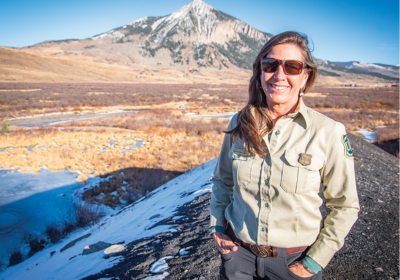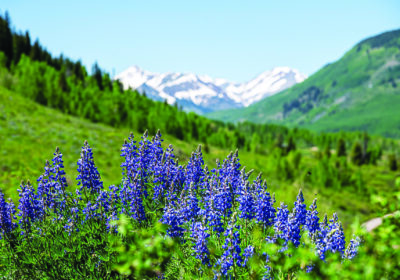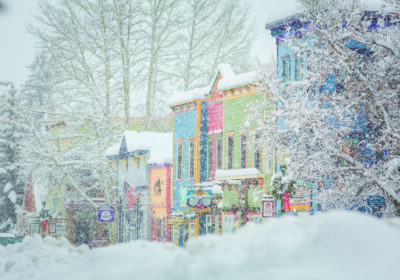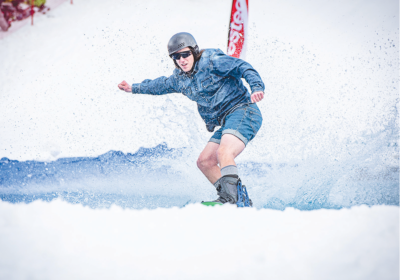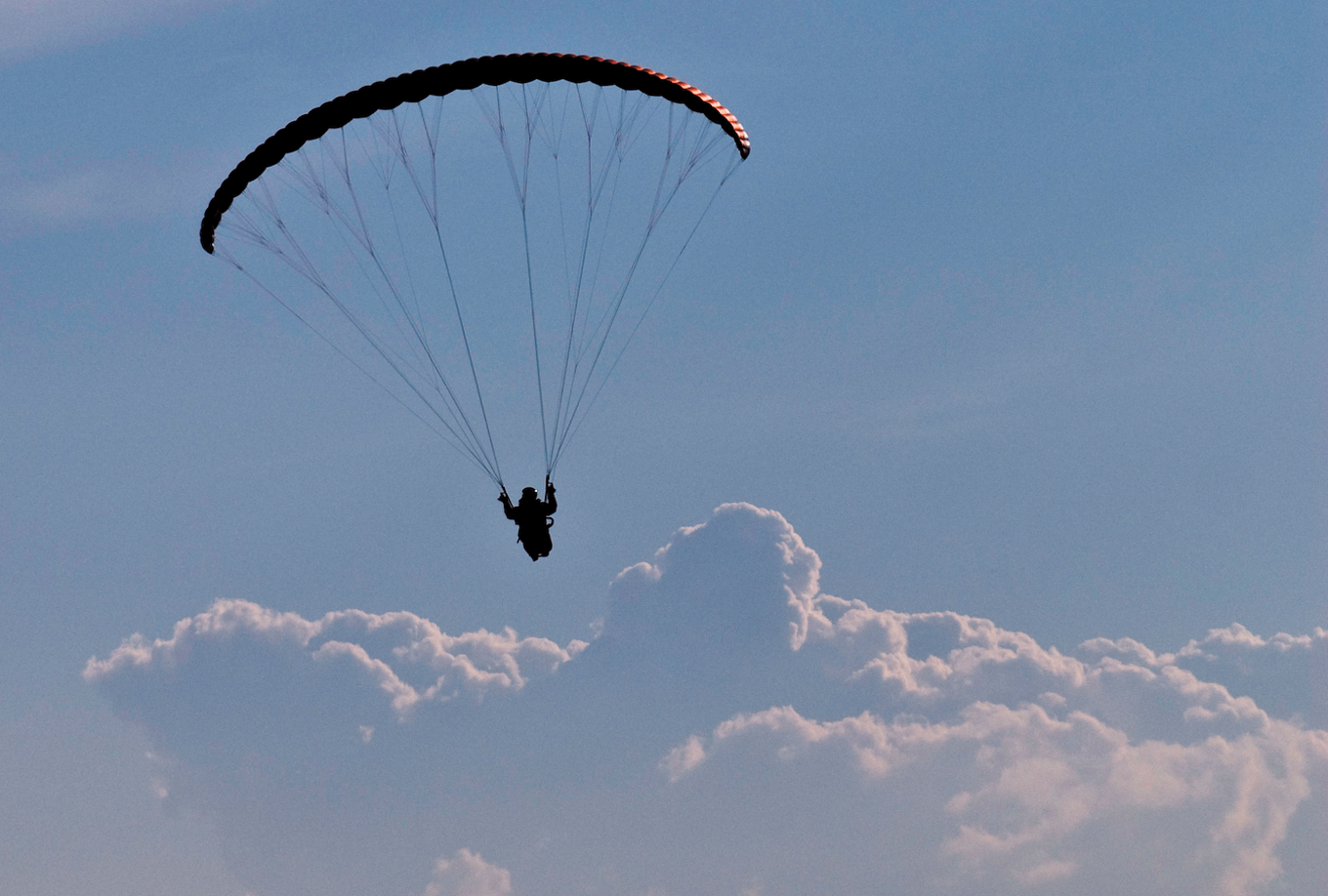
Fly boys
By Seth Mensing
Sometimes Ben Eaton looks at things a little differently. To him, the west-facing cliffs on Crested Butte Mountain can look a lot like a launch pad. Other times, the Town Ranch can pass for a landing zone. And a bird making gentle turns on a rising column of warm air? That’s a tour guide.
Even in a town where people pride themselves on being someplace apart from the ordinary, Eaton, Bo Thomsen and the other dozen-odd members of the Crested Butte Soaring Society take their search for the extraordinary to another level.
Since the early 1970s, hang gliders, and later paragliders, have used Crested Butte’s steep mountainsides and the cliffs that warm in the high-elevation sun as an opportunity to take to the sky. In doing so, the flyers make their appearance in a placid blue sky something locals and visitors looked forward to. They’re a reminder that people don’t just live here; they move here to live.
“I’ve always had dreams of flying, and paragliding was the most inexpensive and easiest way to achieve that,” Eaton says.
The first local pioneers of foot-launched, ultra-light flight from the mountain were loosely organized hang gliders who learned the sport from their European counterparts and brought a passion for soaring back to the valley. Then in the early 1980s, less than a decade after the inception of the U.S. Hang Gliding Association, local practitioners organized into the Crested Butte Soaring Society. “Hang gliding has had certifications and standards since early 1970s,” Eaton says, “and some here in valley were among the first. They pioneered a lot of our [launch] sites.”
When Bo Thomsen got his first taste of flight in 1990, he was hooked. It was the freedom of flying unrestricted, finding the thermals that pushed him higher into the sky and then finding that perfect path back down. True, skiing and biking gave him the wind in his face, but when he took flight, the sky became his mountain.
Since those early years, a lot has changed. Organizations like the U.S. Hang Gliding and Paragliding Association have standardized pilot training, which now has five levels, from the novice P1 to the expert P5. And the technology has improved and become safer and more accessible to those willing to try. Thomsen says buying a wing to fly is often cheaper than buying a mountain bike or a setup to start skiing.
As Eaton will tell you, there’s a lot less stuff to hit in the sky than there is on a ski run or a bike trail, which, despite initial impressions, makes the airborn sport somewhat safer than others in a lot of ways. “It’s obviously dangerous, but not as dangerous as people think,” he says. “It kind of has a bad rap in that sense. There’s misunderstanding and a lot of questions about the sanity of the people up there.”
Sure, Eaton says, there are birds that nest in the cliffs below the launch site on Crested Butte Mountain that will attack an inflated wing with their razor-sharp talons during certain times of the year. But the soaring humans account for the birds and other undesirable events in the sky with redundant systems and a measure of humility.
Thomsen says, “The only scary thing about flying is how easy it is.” Accidents, he says, are usually “not a problem with the wing. They’re a problem with the ego.” A pilot perhaps disregards the weather or gets a late start and decides to fly anyway.
To fly from Crested Butte Mountain, CBSS requires pilots achieve a P4 status, mainly because of the cliffs and limited options to bail out of a bad take-off and the fact that you can’t see the landing site from the launch site. But once in the air, pilots can be airborne for anywhere from the 10-minute “sled-ride” on a calm day to several hours on a day with good thermal activity. “It’s safer in the morning and more fun in the afternoon,” Thomsen says.
For less experienced pilots who come to the valley looking for a place to launch, Thomsen says there are plenty of other good places to fly from and members are typically happy to take the visiting gliders there.
Since its founding, CBSS has had a good relationship with Crested Butte Mountain Resort, which allows pilots to use the lifts to get up the mountain and provides space just downhill of the Silver Queen lift for a launch site about 11 months of the year, restricting access only when the resort is making snow. Access to the launch site, however, is allowed only through the Soaring Society, which carries insurance to cover its member-pilots.
It isn’t easy to keep track of a group of people who come to find freedom in the open space, but Eaton manages to make people in the free-flight community aware of the restrictions on Crested Butte Mountain. There is effective self-policing within the group, he says, that keeps the rogue element of the sport in the minority.
And the reasons people fly are as diverse as the people themselves, with some looking for speed and others looking for altitude or distance. Some hang gliders can travel hundreds of miles and above 14,000-foot peaks. Eaton has encountered people who have flown to Crested Butte from Grand Junction—and then have flown back.
For Eaton, it’s just the joy of flying. Up there, he’s immersed in the natural world, feeling the air and seeing the land as very few people ever can. Sometimes a bird will join him, watching him fly from just a few yards away. “It feels like you could reach out and touch them. The whole sport really edges on something surreal. You kind of get a superpower and at the same time it’s magical and mystical and it almost feels like you shouldn’t be able to do what you’re doing,” Eaton says. “It’s very spiritual.”




